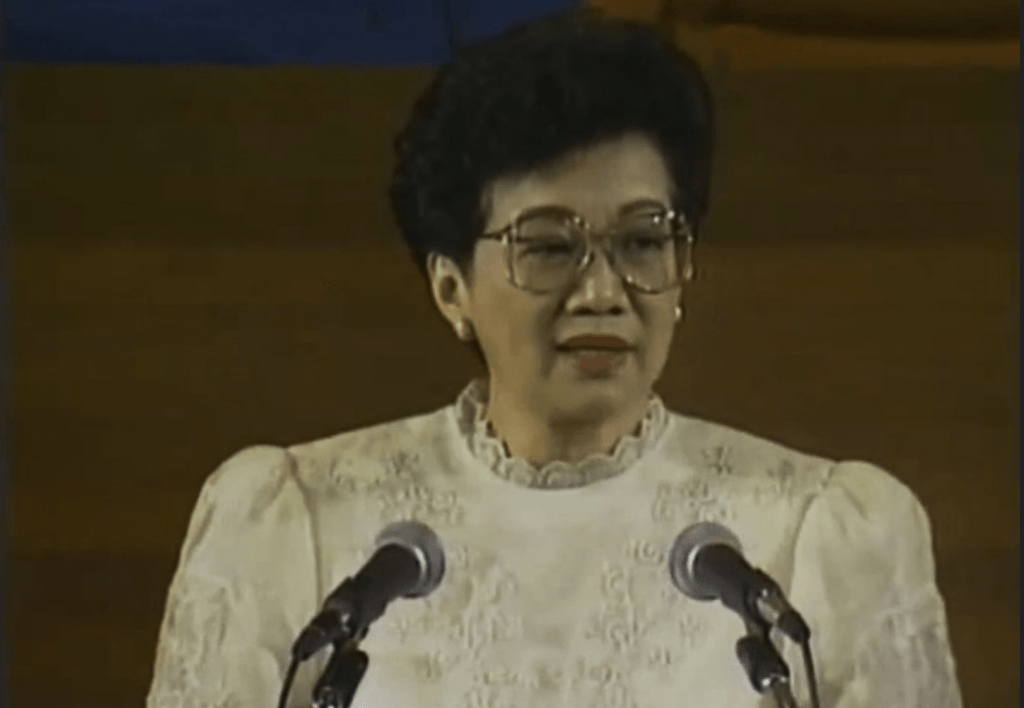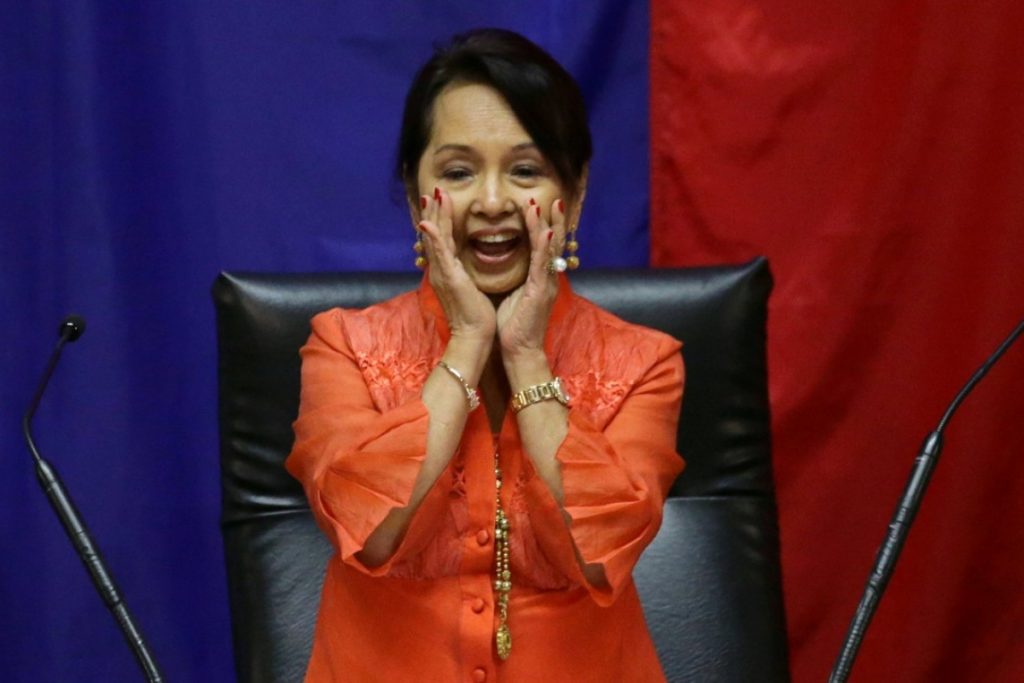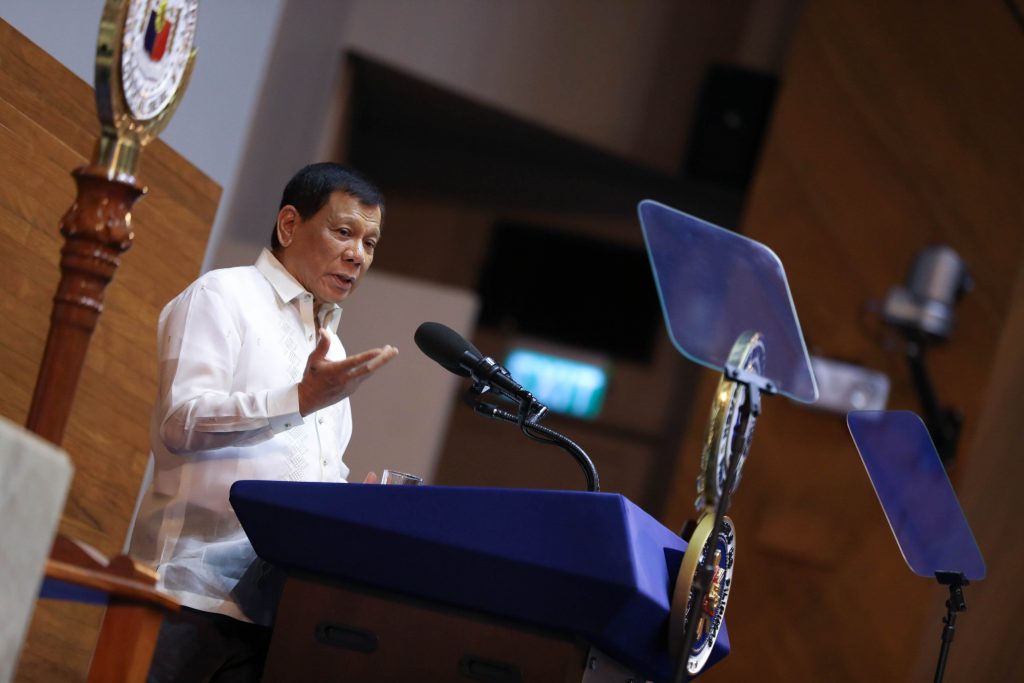In July 27, 1987, then president Corazon Cojuangco Aquino walked up the podium of the Batasang Pambansa and summed up the structural reforms of her administration in her first State of the Nation Address or SONA:
“The dictatorship’s last mockery of democracy,” she said, “was committed in this hall, where the loser was proclaimed winner of the snap election. Today, I join you in rededicating this hall to true democracy.” The dictatorship she referred to in her speech was Ferdinand E. Marcos’ martial law regime, which ran from 1972 until he was ousted in a popular uprising in early 1986.
Amnesty International’s report on the abuses of this regime was staggering: from 1972-1981, give or take 70,000 had been imprisoned, 24,000 tortured, 3,200 killed under the “New Society”. The US$10 billion loot in both gold and assets were the stuff of horror flicks.
Aquino spoke these words to the applause of the crowd. Her transformation from Senator Benigno Aquino’s largely quiet housewife to being the leader of a free republic was all too apparent. As the darling of the press both here and abroad, Cory, as she was fondly called, took even The New York Times by surprise:
“In the four months since she decided to run for office,” the paper said in a Feb. 26, 1986, report, “Mrs. Aquino, a genuinely reluctant candidate, has moved from being a symbol around which the nation could unite to being a leader.”
Within a 516-day time frame after the EDSA uprising, Aquino established a revolutionary government through the signing of the “Freedom Constitution” by virtue of Proclamation No. 3.
How Aquino’s SONA fared with reality was an entirely different story. Six months earlier, late afternoon of Jan. 22, 1987, roughly 10,000 to 15,000 farmers marched from C.M. Recto Ave. to Mendiola where a police line barred the road to Malacañang.
If you recall, the farmers, led by the Kilusang Magbubukid sa Pilipinas, were fighting for genuine agrarian reforms.
According to the commission handling the case, no dialogue transpired between the protesters and the police riot squads. Immediately a clash followed the confrontation. After the smoke had cleared, 13 protesters lay dead on the street. The incident was tagged by the press as the infamous Mendiola Massacre.
In a 1993 Supreme Court decision on the matter of the State being charged for the crime committed by uniformed officers that day, it said, “The inescapable conclusion is that the State cannot be held civilly liable for the deaths that followed the incident. Instead, the liability should fall on the named defendants in the lower court.”

From a legal standpoint, the Cory Aquino administration may have moved past reasonable culpability because of the immunity of the State from lawsuits. But the thin line which runs across legal culpability and moral responsibility will always be raised in the heat of public opinion.
Sadly, the killings did not end here. In 1988, Amnesty International filed a country report “Philippines: Unlawful killings by Paramilitary and Military Forces” and raised the issue of “extrajudicial executions” beginning mid-1987.
The report said that majority of the victims were “suspected supporters of the communist insurgency” and “members of legal left-wing organizations” killed by “regular military and police forces, the Civilian Home Defense Forces (CHDF) or community-based civilian groups known as ‘vigilantes’ acting with government support.”
Hindsight tells us that Cory Aquino wasn’t the only president capable of addressing a nation using words that were largely misleading, if not altogether duplicitous. Another good example was president Gloria Macapagal Arroyo.
Her ninth SONA, delivered during the opening of the Third Regular Session of the 14th Congress, saw her administration setting its sights on a new scourge: terrorism.
“High on our agenda will be peace and security issues,” Arroyo said. “Terrorism: how to meet it, how to end it, how to address its roots in injustice and prejudice — and first and always how to protect lives.”
Not long after her SONA, on Nov. 23, 2009, along a dirt road en route to Shariff Aguak in Maguindanao, close to 60 people, more than half of whom were journalists, were slaughtered in what has been called the worst election-related violence in the history of Philippine polls.
The perpetrators: the Ampatuan clan, known for their close ties with Arroyo and her government.

Human Rights Watch (HRW) at the time “expressed deep concern that the administration’s personal relationships with the Ampatuan family, [which] were likely to hinder rather than aid an impartial investigation into all those responsible for the killings”.
HRW also said in its 2009 report, “Since 2001, when President Arroyo took office, hundreds of left-wing political party members, human rights activists, journalists, and outspoken clergy have been killed or forcibly disappeared, but only six cases have been successfully prosecuted [….] The killings surged after Arroyo’s declaration in June 2006 of an ‘all-out war’ against the communist New People’s Army insurgency”.
Arroyo had somehow missed the chance to bring to fruition what she had said during her first SONA in 2001 on the matter of morality as “the first institution of society” and the principle of justice and the rule of law. “Thus, we see, the historic pillars of a national vision: prosperity, freedom, justice,” she said.
Apparently, vision we all have aplenty. The realization of that vision seems to be an entirely different matter for our leaders.
Recalling this serves the purpose of raising what many have come to believe as a valid point: that for the most part, the State of the Nation Address has become a façade, a propaganda tool rather than the country’s valedictory on reform.
With the election of each and every Chief Executive should come his or her blueprint for national transformation, eventually dictating policy both foreign and domestic.
In essence, the SONA should hold the varying configurations necessary for improvements in a system long considered incapable of rousing meaningful structural changes. Anything shy of the actual state of the nation — where we are and where we ought to go henceforth — is mere hoopla.

It’s safe to assume that President Rodrigo Duterte’s 5th SONA would in no way be different from his past four profanity-filled, half-chewed, largely incoherent addresses. The fact that this has become quite predictable should be a cause of concern for those thinking up ways to polish his image.
After four years in office, a mere rundown of the State’s achievements, even if such achievements prove believable, will not anymore cut it. Even the most ardent Duterte loyalist will nevermore feel quite content with a pandemic infecting a little over 70,000 just two weeks before July ends.
No Filipino would argue the fact that the COVID-19, above all other obstacles, is the real enemy. Yet, with well-nigh predictable incaution, Duterte hurls this out the window and switches to insurgency and terrorism as prime national threats. While it may not be entirely clear why government treats COVID-19 with kid gloves, many fear he is using the pandemic to maintain an iron grip over the populace.
This control allows the regime to push for plans that are by and large unacceptable to the public, like Charter Change, extensions to term limits, easing restrictions to foreign ownership, a parliamentary system of government and allowing the President a second or extended term of office.
This much is certain: in his fifth State of the Nation Address, our nation’s reality can only be gleamed in what largely remains unsaid.
Joel Pablo Salud is an editor, journalist and the author of several books of fiction and political nonfiction.









